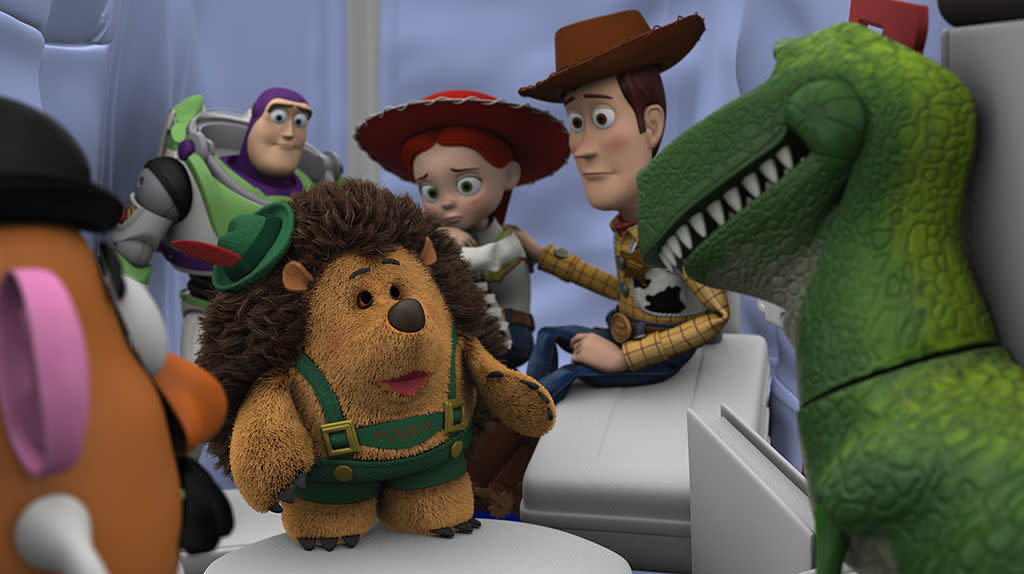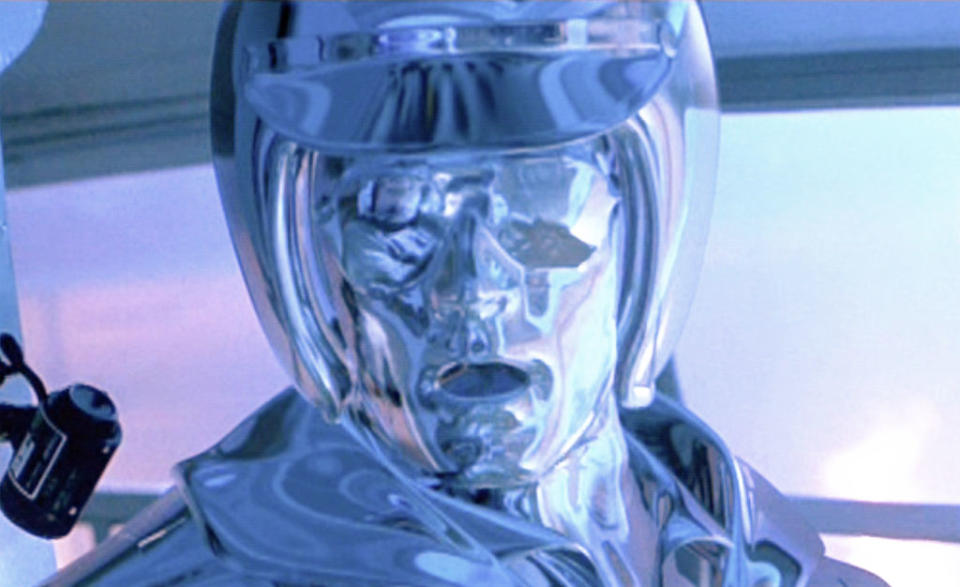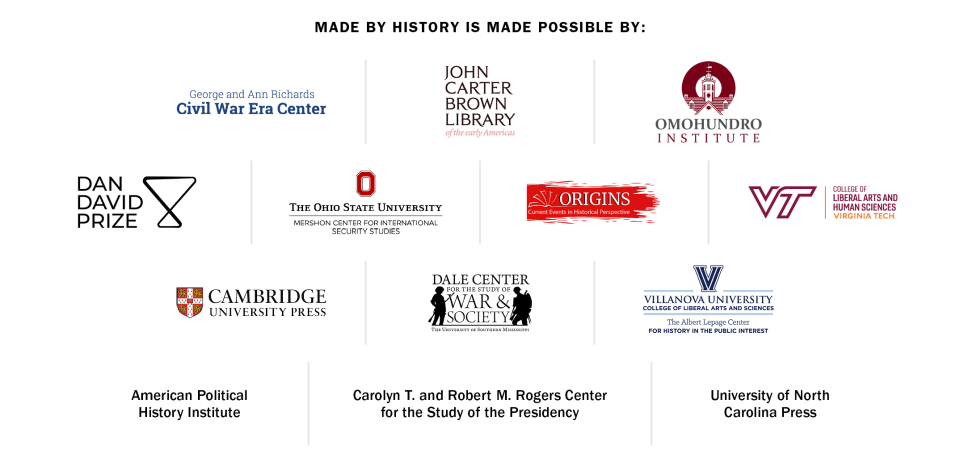The Surprising Link Between the Vietnam War and 'Toy Story'

A scene from DisneyPixar's TV special "Toy Story OF TERROR!" Credit - Disney/Pixar via Getty Images
You have probably already seen the work of Bùi Tường Phong. A Vietnamese computer scientist working in the United States in 1973, Bùi developed the Phong shading and reflection algorithms, which have been ubiquitous in computer-generated movies and 3D video games for the last 50 years. Bùi’s algorithms excelled at depicting plastics, and are one reason that the film Toy Story (1995), the first entirely computer-animated feature film, was about toys.
Asian American and Pacific Islander Heritage month offers a chance to reflect on outstanding contributions by individuals like Bùi Tường Phong. But a closer examination of his life story—and his algorithmic innovations that continue to appear in our everyday digital experiences—has much more to tell us about the last 50 years of history between the U.S. and Asia.
Tracing Bùi Tường Phong’s life reveals how U.S. war in Asia shaped not only his biography, routes of migration, and death—but also the technology he helped develop that now surrounds us. That Bùi’s life story remains so unknown, to others in his field as well as to the broader public, seems to exemplify racist stereotypes about technically skilled but otherwise faceless Asians, and reflects an unwillingness to reckon with Asian American history.
Born in Hanoi in 1942, Bùi Tường Phong moved with his family to Saigon in 1954. They joined millions of refugees fleeing from North to South Vietnam after the Geneva Conference partitioned the country at the 17th parallel. Officially signaling the end of French colonial rule in the region, the partition was meant to be temporary until reunifying elections could be held the following year.
Column: The U.S. Values Asian Work More Than Asian Lives
However, hostilities deepened between the communist-supported North and the French- and U.S.-supported South over the next decade. After the Gulf of Tonkin incident in 1964, the U.S. initiated bombing campaigns in North Vietnam, escalating its military presence throughout Southeast Asia, and solidifying its strategy of Cold War containment. That same year, Bùi moved to France to continue his studies at the Grenoble Institute of Technology.
After seven years in France, Bùi immigrated to the U.S. in 1971. He arrived just six years after the 1965 Hart-Celler Act, an important immigration reform ending various prohibitions on Asian immigration that had been central to U.S. policy since the 1882 Chinese Exclusion Act. It gave priority to immigrants from professional classes or those with specialized skills, allowing Bùi to immigrate due to his technical skills in engineering.
He was also able to immigrate because the U.S. was pouring resources into science and technology—especially the nascent field of computer science—in a Cold War race to establish supremacy in space exploration and military weaponry. In response to the Soviet Union’s launch of Sputnik and the Joe-4 hydrogen bomb test, the U.S. Department of Defense founded the Advanced Research Projects Agency (modern-day DARPA) in 1958 for research and development into emerging technologies “for national security.”
This same agency funded the University of Utah research project that recruited Bùi for his Ph.D. in 1971. It was here that he developed his now-ubiquitous Phong shading and reflection algorithms. Project leaders from the University of Utah would go on to found the company Evans & Sutherland, which developed visual computing systems related to military fighter jet training. Compellingly rendering F-16 Fighting Falcons within flight training simulators directly served the strengthening of the U.S. military. Glints along early digital renderings of missiles were almost certainly computed using the Phong reflectance model that Bùi developed.
Bùi graduated from Utah in 1973, and became a professor at Stanford. But his life ended tragically when he succumbed to leukemia in 1975 at age 32.
Just as the Cold War shaped Bùi’s migratory path and created his professional opportunities, the conflict may have played a role in his death. The same agency that had funded Bùi’s doctoral research, DARPA, had secretly introduced experimental chemical weapons into Southeast Asia during the Vietnam War.
The U.S. Veterans Administration lists leukemia as a “presumptive” illness for any veteran who served in Vietnam during the execution of Operation Ranch Hand (1962-1971), in which the U.S. military sprayed millions of gallons of carcinogenic herbicides throughout Vietnam, Cambodia, and Laos. These defoliants were known as “rainbow herbicides,” including the infamous Agent Orange, that contained dioxins known to cause leukemia.

Subsequent military disclosures have shown that the Bien Hoa air base, Than Tuy Ha ammunition dump, and Tan Son Nhut air bases were all spray sites or staging areas for Operation Ranch Hand in 1962. These sites formed a triangle around Lycée Jean Jacques Rousseau, the school in Saigon that Bùi Tường Phong attended that same year. It is impossible to ignore the possibility that these chemicals contributed to his early death.
Read More: Discovering Joy After My Family’s Traumas During the Vietnam War
While Bùi’s algorithms aimed to increase the realism of computer-generated representations, his own name and image have ironically been consistently misrepresented.
As he was one of the few Asian computer graphics researchers in the U.S. at the time, this mis-rendering reflects how anti-Asian racism has aligned with U.S. foreign and domestic policy. Abroad, the U.S. took the lives of nameless Asian civilians to contain Communism, resulting in the deaths and displacement of millions in Cambodia, Laos, and Vietnam during the Vietnam War alone. Domestically, the U.S. cannibalized the contributions of Asian scientists into U.S. society, including projects of foreign intervention, while treating them as a featureless and interchangeable labor force lacking any individual characteristics. This flattening of Asians caught between two imperial imperatives, their names and faces all blurring together, is reflected in Bùi’s technical legacy.
The citations for Bùi’s work, including the paper that proposed the metallic surfaces algorithm used in Terminator 2 (1991), have consistently muddled his given (first) name, and his family (last) name. In Vietnamese, the family name, Bùi, comes first. However, his family name has variously been cited in the decades after his death as “Bui”, “Phong”, and “Bui-Tuong.”

Nevertheless, our close examination of his publications removes the ambiguity. The cover of his dissertation clearly delineates his family name from his compound given name, and in his final publication, he listed his last name as “Bui.” The preponderance of evidence suggests that he was Dr. Bùi, but the scientific literature misidentifies him as Dr. Phong.
This also suggests that “Phong shading” is a misnomer, but for reasons that will likely remain unknown, Bùi did not contest the naming. While he may not have coined the eponym himself, he referenced it in his dissertation and final publication.

Bùi Tường Phong’s image has also been posthumously misrepresented. Until very recently, the most common photo of him online consisted of a misidentified photo of Vietnamese writer Chu Cẩm Phong. Only in January of this year did a French Wikipedia user, perhaps one of his surviving relatives, upload a photo of Bùi that we verified with his Utah classmates.
Though Bùi Tường Phong did not live to see the global reach of his work, or to steward his own representation, we can commemorate him by remembering the full extent of his life and legacy: with all its turbulence and contradictions under U.S. empire. Phong shading not only rendered Buzz Lightyear’s spacesuit, but the Sidewinder missiles on simulated F-16s. By examining his life in a more global context, we can see how race and technology collude in the historical imperatives of war: in the past, present, and beyond.
Theodore Kim is an Associate Professor of Computer Science at Yale University, a former Senior Research Scientist for Pixar, a two-time Academy Award winner, and is currently writing a book on the racial biases baked into the algorithms for computer-generated imagery. Yoehan Oh is a Postdoctoral Associate and Lecturer in Computer Science at Yale University, where he is teaching a transpacific computing history course and writing a book about a sociotechnical history of the South Korean Internet giant Naver's platform machinery and its domestic survival and international expansions. Jacinda S. Tran is a postdoctoral fellow at the Charles Warren Center for Studies in American History at Harvard University, where she is writing a book about how the U.S. military “saw,” and subsequently destroyed, Cambodia, Laos, and Vietnam throughout the latter half of the 20th century.
Made by History takes readers beyond the headlines with articles written and edited by professional historians. Learn more about Made by History at TIME here. Opinions expressed do not necessarily reflect the views of TIME editors.
Write to Made by History at madebyhistory@time.com.

